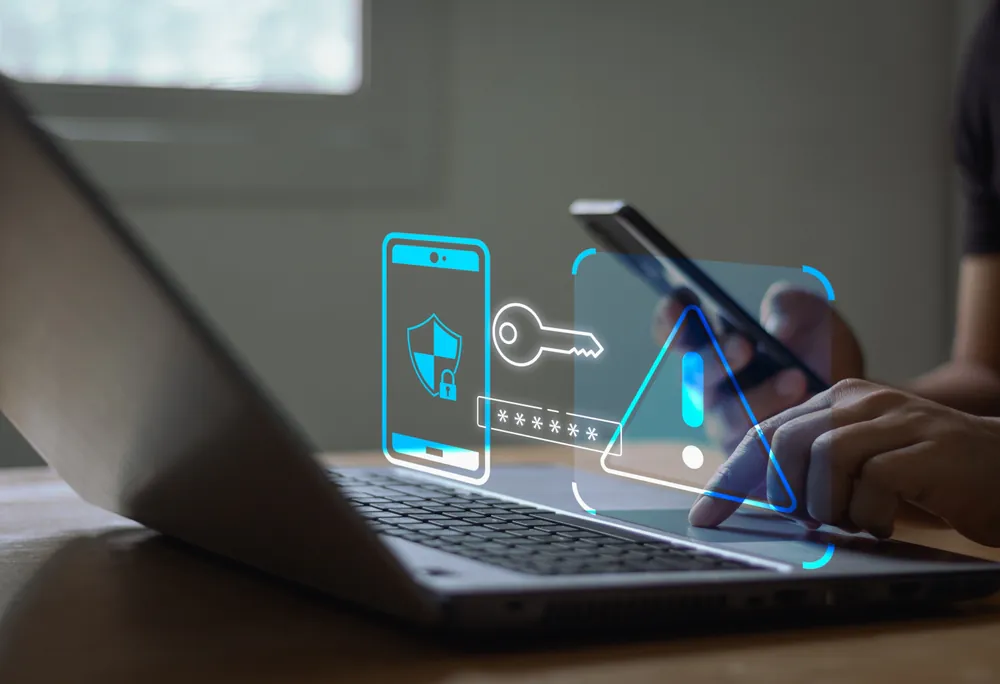As we enter the second half of 2025, understanding the differences between MFA vs. 2FA is crucial for safeguarding your online presence.
What’s the Real Difference Between MFA and 2FA?
Two-factor authentication (2FA) and multi-factor authentication (MFA) are often used interchangeably, but they’re not quite the same. Comparing MFA vs. 2FA can be crucial for understanding which method best suits your needs. Both methods strengthen security by requiring more than just a password to log in, but the number and type of additional steps they require are different, and those differences can be critical depending on your organization’s risk exposure, industry regulations, and employee workflows.
- 2FA = Two distinct authentication factors
- MFA = Two or more authentication factors
Breaking Down the Factors
Authentication factors fall into three main categories:
- Something you know: a password or PIN
- Something you have: a phone, a smart card, or a hardware token
- Something you are: a fingerprint, facial scan, or voice recognition
2FA requires exactly two of these from different categories. MFA may involve two or more, potentially layering additional steps even within a category, like requiring both a fingerprint and a facial scan.
Why Are These Extra Steps Necessary?
Passwords alone are no longer enough. According to Verizon’s 2024 Data Breach Investigations Report, over 80% of hacking-related breaches involved stolen or weak credentials.
Adding 2FA or MFA blocks attackers who only have a password, making it significantly harder to compromise accounts even if credentials are leaked or phished. Considerations of MFA vs. 2FA should focus on your specific vulnerabilities and weigh their differences.
Examples: 2FA vs. MFA in Real Life
Let’s put this into a business context:
Example of 2FA:
An employee logs into a secure document system using a password (something they know) and then confirms their identity through an SMS code sent to their phone (something they have). That’s two distinct factors—2FA.
Example of MFA:
The same employee logs in using a password, responds to a mobile authenticator app prompt, and then uses a fingerprint to unlock a secure file. That’s three factors (knowledge, possession, biometric)—MFA. Understanding such examples of MFA versus 2FA helps inform your security strategy.
So, Which One Does My Business Need?
1. If You’re a Small Business with Limited Resources:
Start with 2FA. It’s a major step up from passwords alone and often free or low-cost. Most cloud platforms (like Microsoft 365 or Google Workspace) offer built-in 2FA options that can be enabled with minimal setup.
2. If You Handle Sensitive or Regulated Data:
Go with MFA. If your organization is subject to HIPAA, PCI-DSS, or other compliance frameworks, MFA might not just be recommended—it could be legally required.
3. If You Have a Remote or Hybrid Workforce:
MFA is more secure. Employees accessing company resources from personal devices or unsecured networks increase the risk of credential theft. Thus, consider the importance of MFA vs. 2FA for layered protection and minimizing that risk.
4. If Your Printers and Networked Devices Are Vulnerable:
Both 2FA and MFA can play a role. Networked multifunction printers (MFPs) often store sensitive documents or credentials. Securing access to device management panels using MFA helps prevent unauthorized configuration changes or data leaks.
Emotional and Financial Drivers: Why This Matters
- Peace of mind: knowing your network, data, and devices are protected against increasingly sophisticated attacks.
- Risk Mitigation: Avoiding the Financial and Reputational Damage of a Data Breach.
- Regulatory compliance: avoiding fines and legal issues tied to security negligence.
- Operational continuity: reducing downtime caused by compromised accounts or ransomware.
Imagine the cost of a single successful phishing attack—ransom, legal fees, reputation loss, and operational paralysis. Now compare that to the low monthly cost of implementing a secure authentication system. The ROI is clear, especially when you weigh MFA versus 2FA options.
Common Objections—and Why They Don’t Hold Up
“MFA slows down my team.”
Reality: Many modern MFA solutions use biometric logins or push notifications that take seconds. The slight friction is worth the protection, particularly when evaluating the robustness of MFA against 2FA.
“Our data isn’t that sensitive.”
If you manage employee records, billing info, or client contracts, you’re already holding data valuable to attackers.
“We already use strong passwords.”
No password is invulnerable. Social engineering, phishing, and credential stuffing make strong passwords obsolete without additional layers, highlighting why MFA vs. 2FA matters.
Final Thoughts: The Future is Multi-Factor
Threats are evolving—and so should your defenses. The real question isn’t just “MFA vs. 2FA,” but what combination of safeguards best fits your environment. If you’re unsure, start with a security audit and roadmap. It’s better to layer up now than clean up later.
Ready to Protect Your Devices, Documents, and Data?
Contact Doceo today for a customized security assessment— Visit https://mydoceo.com or call 888-757-6626 to get started.


